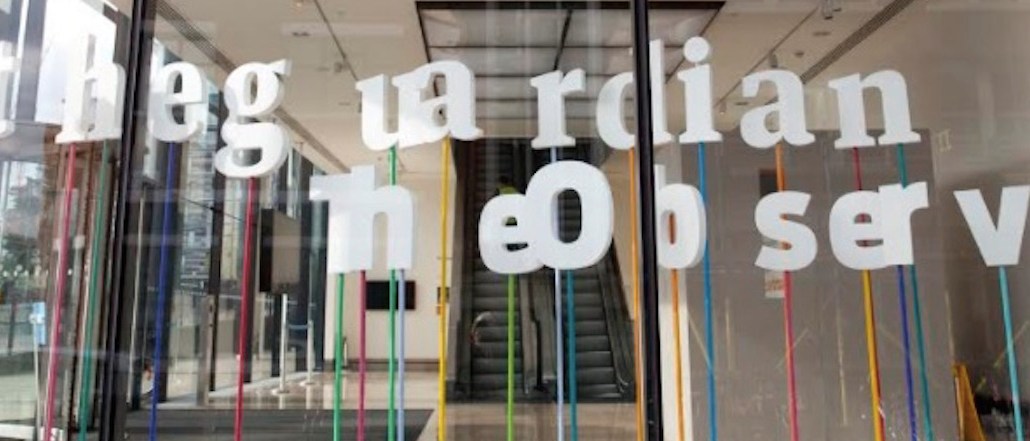Save 50% on a 3-month Digiday+ membership. Ends Dec 12.
Road to 1 million: The Guardian has gone from 15,000 to 200,000 paying ‘members’ in the past year

The Guardian has made big strides in growing its membership revenue, with the number of paying supporters jumping from 15,000 to just under 200,000 in the past year.
The publisher launched the membership program in 2014 and began stepping up promotion last January in an effort to offset declining advertising revenues. In that time, it has also collected over 100,000 one-off contributions.
Now it’s setting its sights higher, seeking to bring in 1 million subscribers by April 2019.
“This is not just a paywall under another name,” said David Magliano, managing director, membership, marketing and consumer revenue. “People that become members don’t get extra or exclusive content; they sign up because they fundamentally agree and think it important that the Guardian’s journalism remains open.”
The Guardian offers three paying membership tiers: Supporters pay £5 ($6.32) a month; partners pay £15 ($19) a month and patrons pay £60 ($76) a month for benefits such as priority booking and discounts on events. The Guardian has been pushing the supporters tier, where the majority of the sign-ups have come from. The Guardian wouldn’t give specific revenue figures, though 200,000 people paying the minimum tier of £5 a month (£60/$76 a year) would generate £1 million ($1.3 million) a month. And 200,000 supporters paying £60 a year would result in £12 million ($15 million) a year. About 50 staffers work across memberships at any given time, whether it is in a data, developer, marketing, user experience or journalism capacity.
The publisher got to 200,000 after testing 30 different messages, with each altering the length and pitch of the messages and their placements on the site.
One early message drew on the Guardian’s history: “From phone hacking to the Panama Papers and Peterloo, we’ve been there: breaking stories for almost 200 years. Contribute to the Guardian today.”
This message drove up the average amount given in one-off donations but didn’t do so well driving memberships. When the publisher switched the message to highlight its unique ownership structure and independence and cost of producing quality journalism, however, conversion rates soared, according to the publisher.

The publisher also tested different placements for the messages, from at the bottom of articles to ad placements to links within editorial stories to pop-ups shown to visitors with ad blockers switched on, the last of which was particularly effective. The publisher has also used social networks to promote memberships and contributions, although the highest conversions have come via its own properties and email newsletters.
Paid membership sign-ups also spiked during three major news periods: The investigation of the Panama Papers, the EU Referendum and Trump’s election. The Guardian started rolling out membership appeal messages in Australia and the U.S. last summer, and the majority of visitors there now see the messages.
The Guardian’s Trump coverage has also driven contributions from its U.S. audience. “Research we have done with the U.S. audience has shown they value that outsider and global perspective we bring to the media landscape and our liberal values,” said Natalie Hanman, executive editor of membership at the Guardian.
The Guardian plans to grow memberships by building deeper relationships with its most loyal readers in the U.S. and U.K. So far, that has involved expanding coverage of what it considers underreported stories. For one series, “The Promise,” the Guardian’s U.S. reporters focused on specific areas in the U.S. such as Northampton County, Pennsylvania, which voted twice for Barack Obama before flipping to support Trump.
Ahead of the election, the Guardian also solicited feedback from readers about what they wanted correspondents to focus on. That effort resulted in stories like “The view from Middletown: join Garry Younge for a unique look at the U.S. election” and “Labour and Liverpool: the city that reveals the cracks in the party.”
Still, getting people to cough up money for online content is tough generally, so sustaining the momentum will be challenging.
That said, if the Guardian does reach its 1 million paying subscriber target by 2019, that would put it well within reach of its ambition of doubling the revenue generated from readers from £30 million to £68 million within three years, which it outlined last year. If the million paying supporters paid the minimum membership of £60 a year, that would create £60 million in revenue.
Douglas McCabe, CEO of media analysts Enders, said there is a clear increase in membership uptake for a range of quality news services, including The Times, and the Guardian in the U.K. and the New York Times in the U.S. “At some level consumers are increasingly aware of the value of quality news provision by trusted brands due to an acceleration in the momentum of national and international political and economic developments. Greater uncertainty has pushed people to engage and commit,” he added.
More in Media

The Washington Post debuts AI-personalized podcasts to hook younger listeners
The Washington Post has used AI to build a pick-your-own-format news podcast, letting listeners choose the topics, hosts and duration.

Workforce data, smarter AI integration among greatest workplace priorities in the new year
The growing importance of workforce data is just one of the prognostications people managers are making looking to the year ahead.

WTF is AI citation tracking?
Publishers are tracking AI citations to understand visibility, attribution gaps and referral traffic in these tools and platforms.








